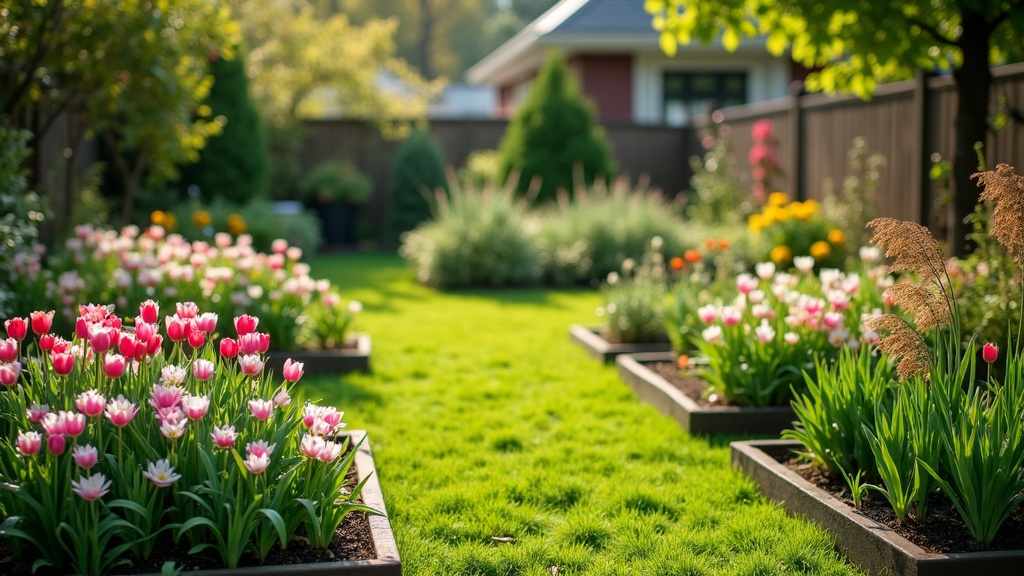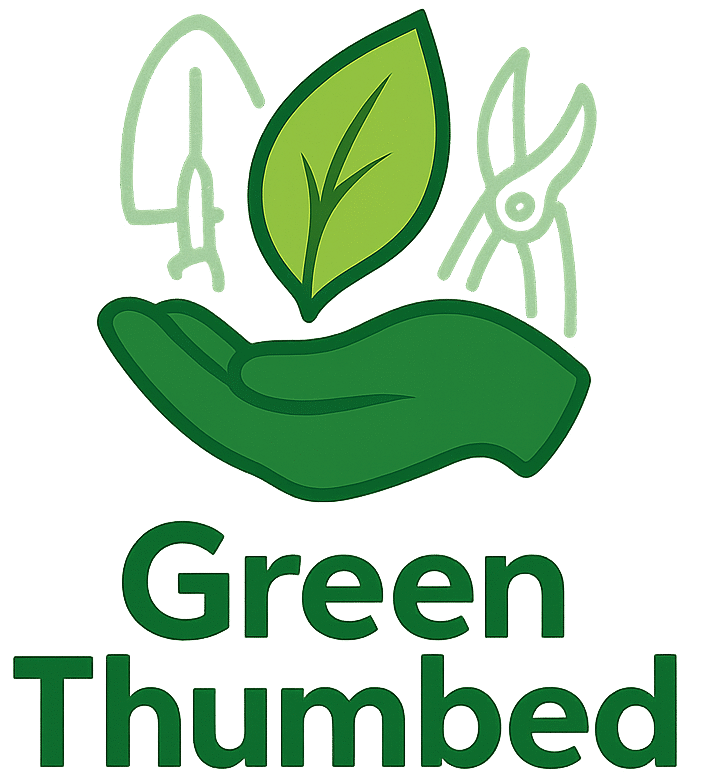Spring is easily my favorite time to breathe new life into the garden, stretch my legs, and enjoy that earthy smell after winter melts away. Whether you’re dreaming of bold flower beds or nurturing rows of crisp veggies, getting things started early in spring can set your garden up for success all season. If you’re eager to prep your patch or just want to see your outdoor space bounce back strong, my spring gardening checklist will help you lay the groundwork for a productive year.

Why Spring Garden Prep Matters
Prepping your garden in spring sets things up for a smoother growing season. After months of cold and wet weather, soil can become compacted, weeds might sneak in, and last year’s dead plants or leaves can make things messy. Clearing these up is about more than aesthetics. It helps your plants grow strong and makes gardening a lot more enjoyable throughout spring and summer.
Gardeners everywhere look forward to the first hands-in-the-dirt days. It’s not just seeds and bulbs in the spotlight; it’s getting your whole plot in shape. Whether you work with a veggie patch, flower borders, or both, jumping into the right tasks now pays off later. Plus, a steady spring checklist means fewer missed steps and healthier, happier plants.
Key Early-Spring Tasks: Groundwork for a Healthy Garden
When winter finally relaxes, there are several garden jobs to tackle before planting anything:
- Clear Out Debris: Fallen branches, dead leaves, and last year’s plant remains can crowd out new shoots. Raking, pruning, and cleaning beds lets fresh growth thrive and keeps pests down.
- Check for Winter Damage: Winter can snap branches, upend supports, and leave mulch sodden. Look for damaged plants, soft perennials, and wobbly trellises needing attention.
- Prune Trees and Shrubs: Early spring (while things are still dormant) is perfect for pruning fruit trees and many flowering shrubs. Trimming removes dead wood and shapes plants for better blooms or fruit.
- Weed Before Weeds Win: Yank out young weeds now. The soft, damp soil helps roots slip right out, making early weeding much easier than later in the season.
Tidying up now brings fast payoffs. Beds look neater, sunlight reaches more soil, and you make space for future plantings.
How to Prep Your Soil for Spring Growth
Healthy soil is the heart of any good garden. After winter, it deserves some care. Here’s my simple soil prep routine:
- Aerate and Turn the Soil: Take a garden fork or shovel and gently loosen compacted areas. It lets roots, water, and air move freely through the bed once again.
- Add Organic Matter: Mix in compost, leaf mold, or well-rotted manure. These natural boosters improve soil health, add nutrients, and keep worms happy.
- Test Soil pH: If it’s been a while, grab a basic soil test kit. Knowing your soil’s pH lets you figure out what amendments your plants need to grow their best.
- Mulch Where Needed: Wait until the ground warms a bit, then add a thin layer of mulch. It locks in moisture and discourages weeds—easy wins for summer upkeep.
Check soil moisture before digging—give a handful a squeeze. If it crumbles, it’s ready; if it sticks like mud, wait a few days for it to dry out.
Picking and Planting Early Spring Stars
Choosing the right plants for early spring means a colorful, productive season. Here are favorites that shine every year:
- Cool Season Vegetables: Peas, lettuce, radishes, kale, and spinach shrug off light frosts. Sow them as soon as you can work the ground without it turning to mud.
- Spring Blooming Bulbs: If you put daffodils or tulips in last fall, keep them weed-free now. To get quick color, tuck in pansies or violas—they’ll handle cool nights like champs.
- Perennial Prep: Split and replant overgrown daylilies, hostas, or other hardy favorites before new growth springs up. This keeps clumps healthy and scores you bonus plants.
Planting too soon can lead to lost starts if a frost moves in, so keep an eye on the local forecast and cover up tender plants if temps dive.
Fixing and Setting Up Garden Infrastructure
Spring prep doesn’t stop with plants. The structures and tools around your space deserve some attention too:
- Repair Raised Beds or Borders: Winter water or thawing can push out boards or stones, so press them back into place and tighten up where needed.
- Clean and Fix Tools: Sharpen pruners, oil garden shovels, and replace worn gloves. Well-maintained tools smooth the way for busy planting days.
- Set Up Supports and Fencing: Before tall peas, beans, or flowers get started, put trellises and supports in place. Now’s also a good time to spot and patch gaps in fences where critters sneak in.
Knocking these jobs out early saves frustration when the planting rush is in full swing.
Common Spring Gardening Challenges and My Simple Solutions
- Overeager Planting: It’s tempting to start at the first sign of warmth, but waiting for the right time pays off. Don’t let a short warm spell fool you if frost could still strike.
- Late Snow or Frosts: Keep plant covers, buckets, or blankets nearby to shelter young seedlings from surprise chilly nights.
- Unexpected Pests: Slugs, snails, and aphids show up fast as temperatures rise. Early checks and organic traps or sprays can head off bigger problems down the line.
Staying open-minded and not stressing about every hiccup really helps. Gardening is about learning and adjusting as each season unfolds.
Extra Tips for an Easy, Productive Spring Garden
Year after year, a few habits help me get more from my garden and boost enjoyment:
- Keep a Garden Journal: Track what you plant, try, or move—plus weather quirks or standout harvests. Flipping through past notes often sparks good ideas for the future.
- Start Seeds Indoors: For extra-early tomatoes or peppers, get them going indoors under lights. Watching green shoots rise while it’s still cold outside is always a thrill.
- Plan for Pollinators: Add early flowers like crocus or grape hyacinths to lure in bees. Plant these near your veggies to get a pollination boost that lasts all season.
Spring can seem overwhelming, but working through your checklist step by step makes it more manageable. A little effort up front pays off in lush beds and healthy crops.
Frequently Asked Questions
Here are common questions I get from garden buddies when spring rolls around:
Question: When is the best time to start prepping my garden in spring?
Answer: Start after the ground thaws and you can dig without it clumping on your shovel. For many, that’s late March or early April, but check your local frost dates to be sure.
Question: Should I add fertilizer in spring or wait until later?
Answer: It’s fine to put a little balanced fertilizer, compost, or other organic matter on now—especially if test results showed low nutrients. For perennial borders, I usually top-dress with compost and let the rain soak it in.
Question: How do I stop weeds from taking over before I plant?
Answer: Weeding early—before they seed—makes a big impact. Spreading mulch on clean beds blocks sunlight and keeps weed growth low until you’re ready to put in new plants.
Getting the Most Out of Your Spring Gardening Season
Getting your garden ready in spring makes all the best parts—planting, harvesting, and soaking in blooms—easier and way more satisfying. Checking off these basics early lets your plants go from good to great, and even a small space becomes a cozy, colorful getaway. Every bit of prep shines through in summer growth, and there’s nothing like seeing your garden get into full swing after a long, cold winter. Happy gardening!
